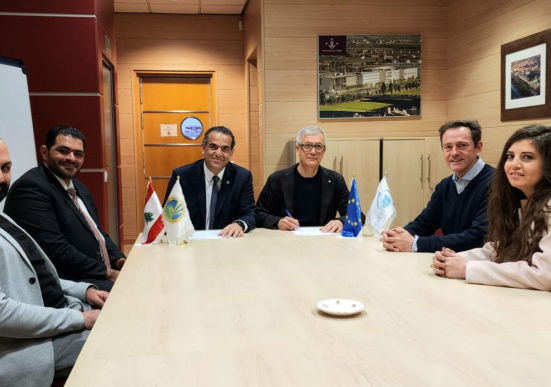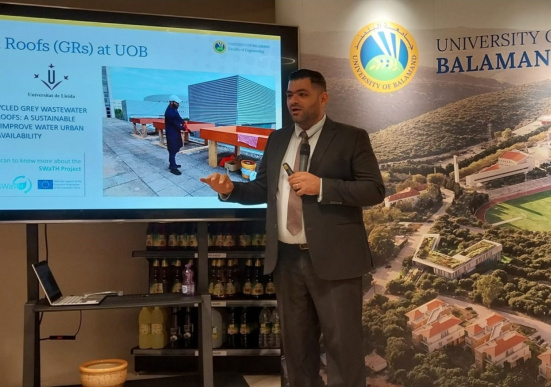Within the context of the SWaTH project, training on the current Swedish wastewater treatment practices was conducted in Stockholm between 6 and 11 June 2022. This mobility attracted many faculty members from various Lebanese and European partner institutions, namely: Henri EL ZAKHEM and Makram EL BACHAWATI from the University of Balamand – Lebanon; Francisco MALDONADO HÓDAR from the University of Granada – Spain; Mohamed SAWADOGO from the University of La Rochelle – France; Joyce KHEIR, Tamara AL BITTAR and Ibrahim KHOURY from the Lebanese University – Lebanon; and Carl AOUN from the Lebanese American University – Lebanon.
The local organizers, Joydeep DUTTA and Bassam KAYAL from the KTH Royal Institute of Technology University (KTH) and Mihai Nicolescu from Plasmatrix Materials AB, as well as other members from both institutions, welcomed the Lebanese and European partners.
This multidisciplinary journey included technical presentations on different wastewater treatment processes and technologies, a stop at Stockholm university, a field visit to wastewater treatment plants, and a practical guided tour at Stockholm water Technology AB. In addition, the SWaTH team visited the numerous laboratories, facilities, and departments at KTH.
This mobility started with Ulrica EDLUND, director of MistraTerraClean Program, addressing global sustainability challenges and using naturally occurring and commercially important raw materials to develop innovative materials to remove chemical wastes and pollutants from ambient water and air in the environment and industrial effluents. Afterward, Zahra KALANTARI, director of the water center at KTH, depicted digitalization, decentralized technologies, innovative water cleaning devices, circular economies, etc. Joydeep DUTTA, Chair of Functional Materials Group at KTH, explained how nanotechnologies could contribute to sustainable living. Further scientific presentations focused on electrocatalytic oxidation of pollutants in water, capacitive deionization, functional materials, Photo-Fenton reactions, membranes in water treatment, and electrochemical disinfection to generate chemical oxidants via in situ redox reactions on the surface of an electrode.
The field visits to Syvab WWTP, Henriksdal WWTP, and SWT startup company were the highlights of this mobility. Syvab plant has been operating since 1974 and is Sweden’s fifth largest WWTP. It treats wastewater from about 335.000 connected people and receives over 40 million m3 of wastewater annually (or 120,000 m3 of water per day). Henriksdal plant has been operating since 1941 with an initial treatment capacity of 150,000m³ a day. Nowadays, it is one of the world’s biggest underground WWTP. Henriksdal WWTP covers a total area of 300,000m2 with 18 km of associated tunnels and a wastewater treatment capacity of roughly 250,000m³ a day. The plant serves 800,000 people from Stockholm and surrounding municipalities.



